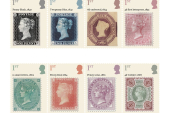
The British pound reached its strongest level against the U.S. dollar this year on Friday, buoyed by positive UK economic data and a weakening dollar as concerns over U.S. tariff threats eased.
Investor sentiment toward the UK economy improved after data released on Thursday revealed that Britain's GDP unexpectedly expanded by 0.1% in the final quarter of 2024, reinforcing confidence in the country's economic resilience.
"The pound benefited from a broad risk-on sentiment in the market on Thursday, alongside a slight upside surprise in the latest Q4 GDP figures," said Matthew Ryan, head of market strategy at Ebury.
However, he cautioned that the economic outlook remains complex due to stagnant growth in the latter half of last year, persistent inflation, elevated mortgage rates, and a heavy tax burden.
Sterling also gained ground on Friday as the dollar weakened, with traders encouraged by the absence of immediate retaliatory tariffs from Washington, signaling potential for negotiations. Additionally, a U.S. producer price report provided some relief on inflation concerns, further weighing on the dollar.
Against the euro, the pound remained largely stable, with one euro trading at 83.39 pence.
In the money markets, traders are pricing in 60 basis points of interest rate cuts from the Bank of England this year, compared to just over a quarter-point reduction expected from the Federal Reserve and at least four quarter-point cuts anticipated from the European Central Bank.
Looking ahead, investors are awaiting the UK’s fourth-quarter labor market report, set for release next Tuesday. This report will offer further insight into the Bank of England’s potential interest rate trajectory, especially after the previous report showed wage growth holding steady at 6% in the three months to November, despite indications of a cooling jobs market. Stronger pay growth could add inflationary pressure, influencing future policy decisions.


































